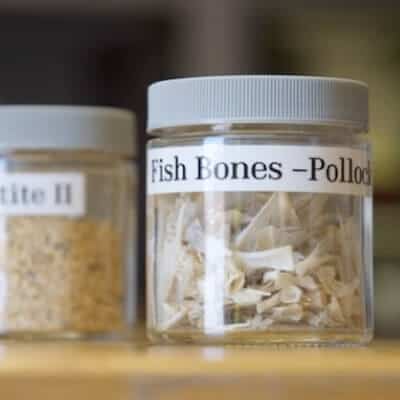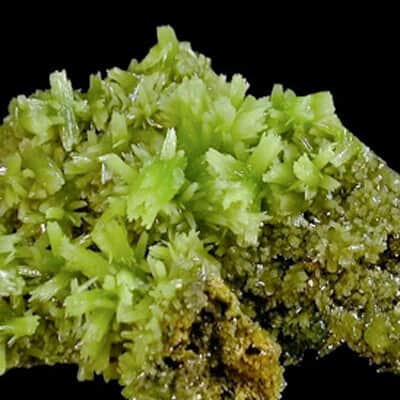In cities, older neighborhoods tend to have higher amounts of lead contamination. Soil nearest to structures (especially those older than 1978) and roads have the highest concentrations. Lead can also be found in vacant lots where a building once stood, as well as old orchards.
Below is some helpful information and tips on dealing with lead in the soil that offer safer ways to proceed for all you green thumbs.
How Does Lead Get Into the Environment?
Many older houses and buildings used lead-based paint, and as the paint ages, it chips off and mixes with the soil, which is why lead levels in residential soils tend to be highest closest to buildings. Lead was a component of the paint used on children’s toys – now restricted in many countries. Prior to 1978, most fuels contained lead, and the exhaust from cars would deposit lead oxide onto soils near heavily trafficked roads. Most countries stopped using leaded gasoline as of 2007. Lead contamination may also come from leaded gasoline leaking from old underground storage tanks (at gas stations for example). Until the early 1970s, lead was also used for joining cast-iron water pipes and used as a material for small diameter water pipes. Any place where an older structure has burnt down will likely have lead contamination. Lead was also used in pesticides before the 1950s, mainly for fruit orchards.
Lead is currently used in building construction, lead-acid batteries, fusible alloys, pewters, bullets and shots, weights, as part of solders and as a radiation shield. In the construction industry, lead sheets are used as architectural metal in roofing material, cladding, flashing, gutters and gutter joints and on roof parapets. Lead is also frequently used in PVC (polyvinyl chloride) plastic, which coats electrical cords, as well as a coloring agent in some ceramic glazes. Some lead compounds are used as an additive for aviation fuel in piston-driven aircraft, and lead-based semiconductors are being used in photovoltaic cells (solar energy) and infrared detectors. Lead mining and smelting are also sources of environmental contamination globally.
What are the Health Impacts of Lead?
Lead damages the nervous system, especially in young children, as it is a neurotoxin that accumulates in both soft tissues and bones. Lead has been proven to permanently reduce the cognitive capacity of children at extremely low levels of exposure, causing learning and behavior disorders. High levels of lead in the blood are associated with delayed puberty in girls. It causes blood and brain disorders and is toxic to the heart, bones, intestines, kidney and reproductive systems in both adults and children. Exposure can lead to small increases in blood pressure and can cause anemia. Exposure to high levels of lead can cause brain and kidney damage, as well as lead to miscarriages in pregnant women. Chronic, high-level exposures of lead have been found to reduce fertility in men.
If you are going to be working with lead-contaminated soils, take the following safety precautions below to limit your exposure:
- Do not wear your outside/garden shoes or clothing indoors; they can bring soil contamination indoors.
- When working, wear gloves and tight-fitting face mask.
- Wash your hands after you garden and before you eat.
- Locate your veggie garden at least ten feet from heavily traveled roads and old painted structures (e.g. houses, building).
- Add mulch (leaves or wood chips) and plant ground cover/cover crops to stabilize the soil and reduce bare soil so that it doesn’t get blown around by wind, splashed up by rain or ingested by children and animals. Sheet mulch would be a great option here: laying down cardboard and then layering your compost layers on top of that.
- Definitely avoid eating roots, stems or leaves of plants if your soil has high lead levels. Do not plant greens (e.g. broccoli, kale, mustard greens, spinach and lettuce); common greens may concentrate lead in their leaves. As lead tends to stick to soil particles, the closer the plant is to the soil and the more contact it has with the soil, the higher the chances for higher contamination. Some sources say that most of the lead that enters a plant accumulates in the roots and then in the leaves, though there are some exceptions. Remember that lead accumulation and location differs according to each plant species.
- Discard old, outer leaves of vegetables before eating; always peel root crops; wash all produce thoroughly with one tablespoon vinegar per 1-1/2 quarts of water.
- Grow your produce in raised beds for the least amount of lead contamination (as long as the soil you add to the raised beds is truly clean soil and is not contaminated with lead)
Grassroots Bioremediation of Lead Contaminated Soils:
There are 3 main options for grassroots remediation of lead contaminated soils. If you choose to go this route, make sure you take proper health precautions and also wear protective gear (like tyvek suit or work clothes that you leave outside, face mask, gloves), and try to restrict access to your site or the soil (especially to children) until remediation has cleaned it up, or at least there is mulch or a cover crop laid down to stabilize the soil. Also, some folks moisten the soil a bit before working, to keep lead soil dust down. A common conventional remediation way to deal with lead contaminated soil is often to dig it up, haul it away to a landfill, and then truck in “clean” soil mined from elsewhere. Othertimes, the soil is capped, using grass or concrete. Not the most sustainable or ethical of solutions. Read below for different grassroots bioremediation options.
Option 1: Bind/Immobilize Lead
Add organic matter to raise pH of soil
One way to keep lead from moving into plants is to increase the alkalinity of your soil. You can do this by adding organic matter, amendments or compost that are more alkaline. Lead is a cationic metal – it becomes less bioavailable in more alkaline soil conditions.
By adding compost (hopefully good aerobic compost!) to the soil, you are also adding a diverse range of microorganisms that have the ability to bind lead and other contaminants. You are also adding humic acid, which also binds contaminants, though only for about 2 weeks. So constant compost application, as well as compost tea will not only increase the fertility of your site, but can immobilize the lead via microbial remediation.
Add phosphorous or iron
Adding phosphorous also decreases availability of lead to plants, as it binds to the lead and forms pyromorphite crystals, a form of lead which is non-toxic and not bioavailable. Some good sources of phosphorous are fish bones, bone meal (calcium phosphate), bat guano and chicken manure.
You can also add some of these amendments to your compost to create a phosphate-rich compost to add to your site. In order to form the pyromorphite, you may have to lower the soil pH first to make the lead more mobile. You can do this by either adding organic sulfur, pine needles, peat moss, sawdust, leaf mold and/or coffee grounds to soil to increase acidity. Then add a soluble form of phosphorous, and the two should combine into the more inert and less bioavailable pyromorphite.
If you are adding phosphorous, make sure you are not also dealing with arsenic contamination, as phosphorous actually enhances plant uptake of arsenic. To immobilize/bind arsenic and lead in the soil, add an amendment that has iron in it. For more information on dealing with lead and arsenic, see Earth Repair.
Wait and then build soil up or cover soil with green cap
Make sure you allow some time for the phosphorous and the lead to react in the soil. Then test your soil to see if pyromorphite is indeed being formed or not. Some sources say it could take several weeks for this reaction to occur. If not, then you may have to play with different sources of phosphorous and the pH until you find a good match. Following that, you then bind the lead further by bringing the pH back to neutral, build the soil up using compost, sheet mulching or raised bed techniques or establish a vegetative cover over the site.
An example where this technique is being used is at the US EPA West Oakland Lead Project. In South Prescott, an Oakland, California neighbourhood, fish bones (which seem to combine especially well with lead to form pyromorphite) are made into a paste and then tilled into the lead contaminated soil. The soil is then covered with some sort of green cap (sod, clean soil with mulch, plants, raised beds or gravel).
In some extreme cases, the combination of lowering the pH and adding increasing phosphorous concentrations can have adverse impacts on soil microorganisms, so you may want to reinoculate later with compost tea and compost. Lead immobilization using phosphorous has been tested on old mine and industrial sites. However, garden soils can be richer in phosphorous so adding too much phosphorous amendment can sometimes damage plants. Determining how much amendment (whether it is phosphorous or iron) to add and it’s application rate can be tricky. Proceed with caution, do your research, start small before applying it to a larger area, test your soil to see if it your remedy is indeed working, and also consider soliciting some professional guidance.


Option 2 – Extract Lead from Soil Using Hyperaccumulator Plants
Lower Soil pH – Lead can be extracted easier under acidic conditions
If you want to facilitate lead being drawn out of soil by plants, then make your soil more acidic. You can do this by adding more acidic compost or amendments (sulphur, leaf mold, coffee grounds, pine needles) to your soil. Do not add phosphorous-rich materials or compost as that can block extraction. Neutralizing compost and micro-organism rich compost tea will also likely hinder extraction, as they have more of a binding effect on the lead.
Plant Lead Hypperacummulating Plants
Once you’ve managed to decrease the pH of your soil, then plant multiple rotations of lead-accumulating plants (e.g. geraniums, corn, sunflowers, brown mustard, alpine pennycress, vetiver), and be sure to take the proper precautions with their testing and disposal. Plants that hyperaccumulate heavy metals need to be tested to determine whether they are now toxic. If they are, they must be disposed of properly and safely – do not compost them down and re-spread that compost on site.
The more rotations of phytoextractors you use, the more lead you will withdraw, as long as you keep the soil at an optimal acidity for uptake.
Some common plants that have been experimented with are: Alpine Pennycress (Thlaspi caerulescens), Sunflower (Helianthus annuus), Brown Mustard (Brassica juncea), Geranium (Pelagrium spp), Corn (Zea mays), Vetivergrass (Vetiveria zizanioides), and Spinach.
Some folks have found lead phytoextraction to be successful, while others experts have found it slow and challenging, encouraging folks to bind and immobilize the lead instead.

Option 3: Combination Approach
You could try a combination of both option 1 and 2. Do a combination of a few rounds of phytoextraction with key plants, followed by trying to bind the remaining lead via organic matter, liming the soil or adding phosphorous. Then build the soil up using sheet mulch or raised beds so that plant roots are not drawing too much from the contaminated soil.
Caution: If you are dealing with dangerously high levels of lead contamination (the USA EPA says 2,000 ppm or more), consider forgoing microbial and phytoremediation and instead focus on really covering the exposed soil effectively. Start over with six inches of clean soil or compost, then create a barrier or find a way to stabilize the soil, the objective being that that there is no bare soil showing. For this, you can use thick mulch (wood chips, leaves) or landscaping fabric, crushed stone, patio or stepping stones. From there, you build raised beds using clean soil or plant non-edible plants.